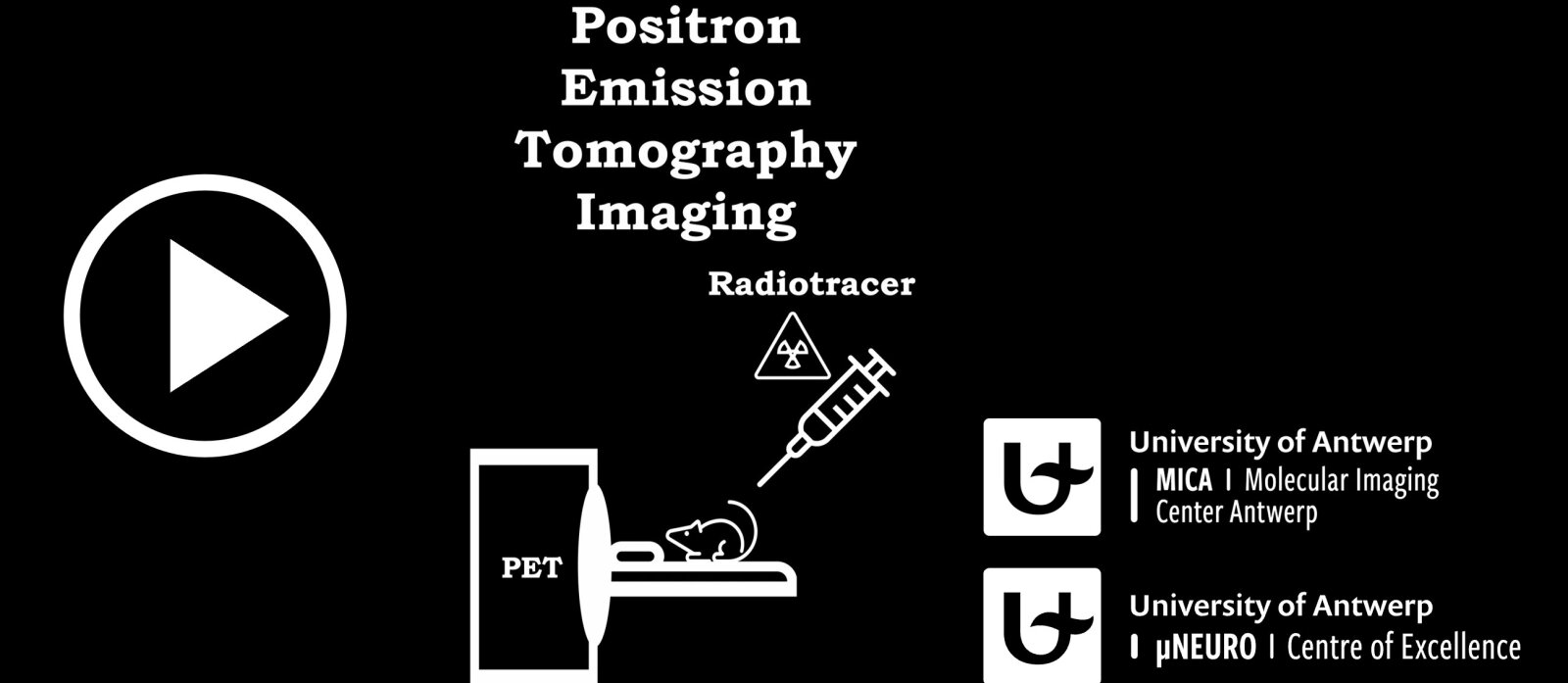The Molecular Imaging Center Antwerp (MICA) has the goal to take (pre)clinical molecular imaging to the next level.
Watch the video to get a glimpse of the research activities of the PhD students in our group!
Watch the video

About PET imaging in Huntington's disease
Radiolabelled tracers and non-invasive PET and SPECT imaging allow regional quantification of biomarkers in animal models of neurological disorders. Hence, these represent excellent tools for monitoring disease progression or even therapeutic effects. MICA has strong ties to the clinical Nuclear Medicine department at UZA enabling translational research (from animal models to humans).
Huntington’s disease (HD) is an inherited and highly detrimental neurodegenerative disorder and one of the main research focuses at MICA. HD is caused by the mutated Huntingtin (HTT) gene encoding for mHTT protein. People with HD suffer from protein aggregation in the brain which can be visualized with PET imaging. Therefore, PET imaging of accumulated mHTT aggregates is of special interest as it assists not only in monitoring disease progression but also in the development of therapeutic interventions.
By Franziska Zajicek, Liesbeth Everix and Jordy Akkermans
Molecular Imaging Center Antwerp
